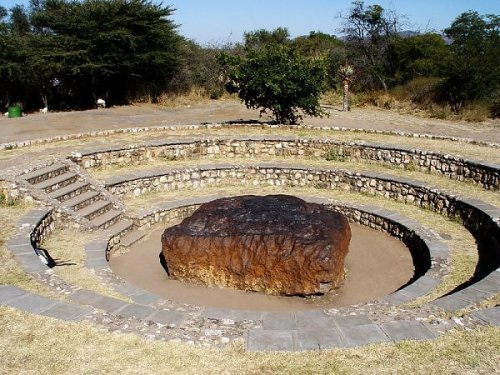But the thinness of the clay layer clearly suggested that in Umbria, if nowhere else, something rather more abrupt had happened. Unfortunately in the 1970s no tests existed for determining how long such a deposit might have taken to accumulate.
但是,這層薄薄的黏土顯然表明,在翁布里亞,如果不是在別處的話,事情發生得非常突然。不幸的是,在20世紀70年代,沒有人研究過積累那么一層黏土需要多長時間。
In the normal course of things, Alvarez almost certainly would have had to leave the problem at that, but luckily he had an impeccable connection to someone outside his discipline who could help—his father, Luis. Luis Alvarez was an eminent nuclear physicist; he had won the Nobel Prize for physics the previous decade. He had always been mildly scornful of his son's attachment to rocks, but this problem intrigued him. It occurred to him that the answer might lie in dust from space.
在正常情況下,阿爾瓦雷斯幾乎肯定不會去管這個問題。但是,非常走運,他跟有個能幫得著忙的局外人有著無可挑剔的關系──他的父親路易斯。路易斯·阿爾瓦雷斯是一位著名的核物理學家,10年前曾獲諾貝爾物理學獎。他對自己的兒子愛上巖石總是有點兒瞧不起,但他對這個問題很感興趣。他突然想到,答案可能在于來自太空的塵埃。

Every year the Earth accumulates some thirty thousand metric tons of "cosmic spherules"—space dust in plainer language—which would be quite a lot if you swept it into one pile, but is infinitesimal when spread across the globe. Scattered through this thin dusting are exotic elements not normally much found on Earth. Among these is the element iridium, which is a thousand times more abundant in space than in the Earth's crust (because, it is thought, most of the iridium on Earth sank to the core when the planet was young).
每年,地球要積攢大約3萬噸“宇宙小球體”──說得明白一點,太空塵埃,要是掃成一堆,那倒不少,但若是撒在整個地球上,那簡直微乎其微。在這層薄薄的塵埃里,散布著地球上不大常見的外來元素。其中有元素銥。這種元素在太空里要比在地殼里豐富100倍(據認為,這是因為大部分銥在地球形成之初已經沉入地心)。
Alvarez knew that a colleague of his at the Lawrence Berkeley Laboratory in California, Frank Asaro, had developed a technique for measuring very precisely the chemical composition of clays using a process called neutron activation analysis.
路易斯·阿爾瓦雷斯知道,加利福尼亞州勞倫斯·伯克利實驗室有一位名叫弗蘭克·阿薩羅的同事,通過使用一種被稱之為中子活化分析的過程,發明了一種能精確測定黏土化學成分的技術。












